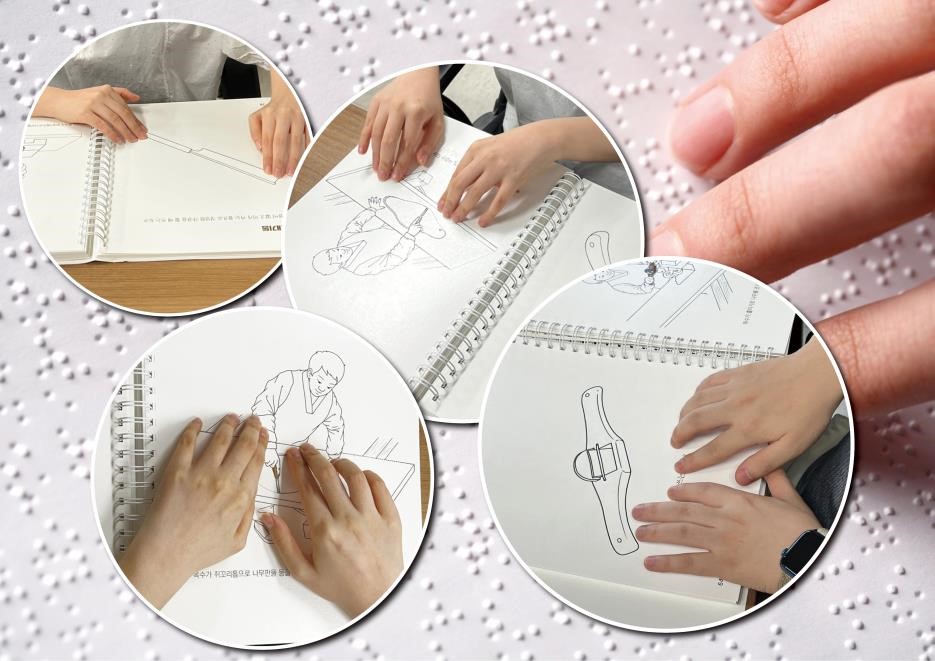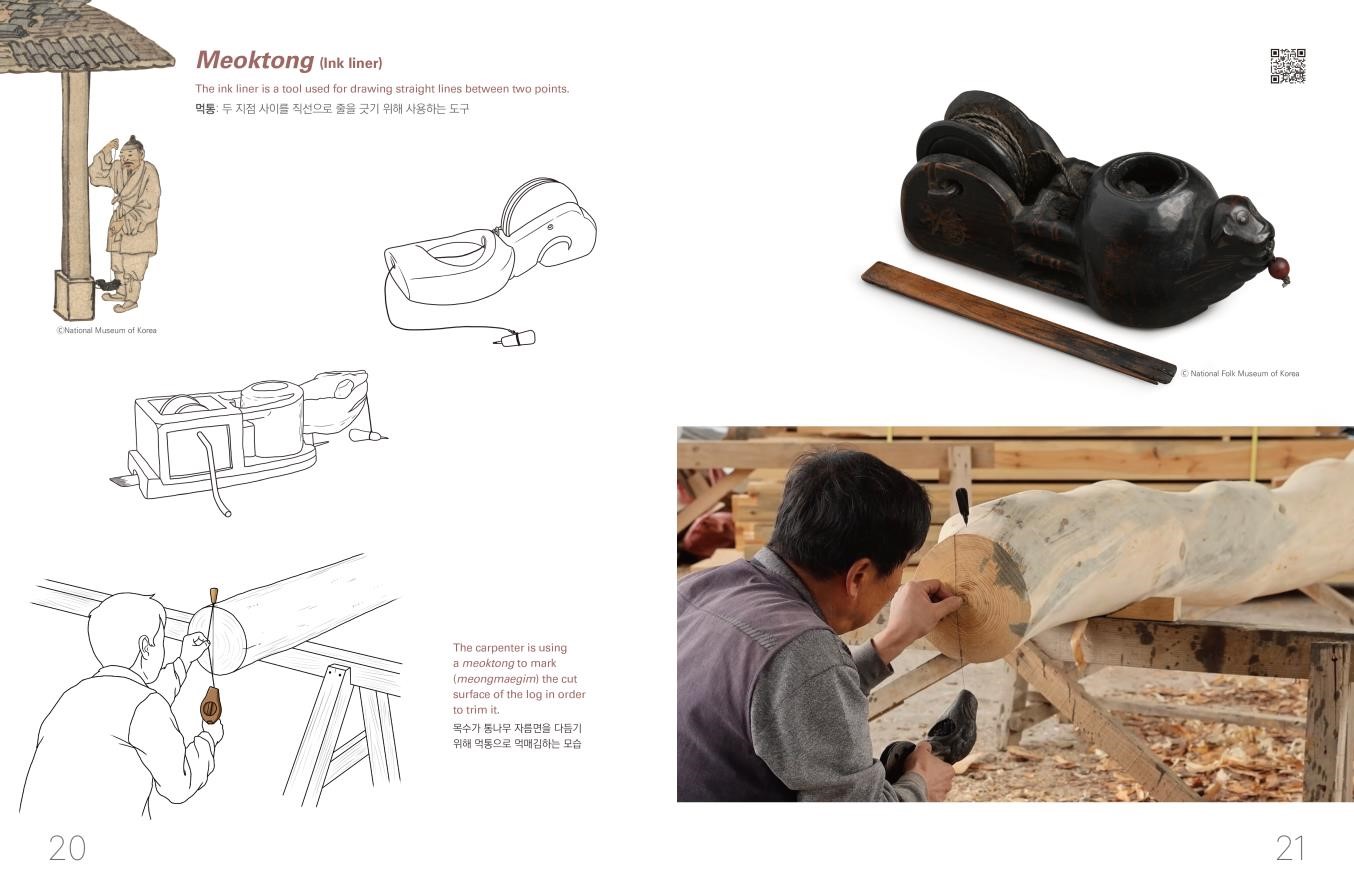Publication of braille/English Book Introducing Tools Used by Masters of Korean Traditional Carpentry
The Wanju National Research Institute of Cultural Heritage (Director Choi In-hwa) of the National Research Institute of Cultural Heritage, Korea Heritage Service, has published both English and braille tactile versions of the book, An Illustrated Guide to the Tools of Daemok, the Masters of Korean Traditional Carpentry (Korean title: Geurimeuro boneun jeontong geonchuk jangin daemok ui dogu). This initiative aims to ensure that people with visual or hearing impairments, as well as foreigners and overseas Koreans who are not fluent in Korean, can comfortably understand Korea’s traditional architecture and the tools used in it. * Daemok: master carpenters skilled in traditional wooden architecture, responsible for the planning, design, and construction of buildings, as well as the management and supervision of other carpenters An Illustrated Guide to the Tools of Daemok, the Masters of Korean Traditional Carpentry contains the names and uses of 41 tools used by the masters of Korean traditional carpentry, such as tanggaetop (bucksaw), kkeul (chisel), and daepae (plane). The braille tactile version of the book provides all descriptions in braille and includes tactile illustrations of the tools so that readers can feel the shapes of the tools with their fingertips. Furthermore, the QR codes in the book provide access to videos of carpenters demonstrating and explaining how the tools are used, with sign-language translations, allowing not only the visually impaired but also those with hearing impairments to understand without barriers. The English version of the book provides descriptions of the tools in both Korean and English. It includes illustrations, historical photographs, and demonstrations by carpenters to make it easier for foreigners to understand. Additionally, the book features QR codes that can be scanned to watch videos of carpenters explaining how the tools are used and maintained, as well as sharing related anecdotes. The Wanju National Research Institute of Cultural Heritage hopes that this book will be widely utilized, expanding the opportunity for many people to appreciate Korea's cultural heritage beyond linguistic and physical barriers. The book will be distributed to major libraries, museums, schools for people with visual impairments, and other related organizations in Korea and abroad. The English version of the book will be available to anyone on the websites of the Korea Heritage Service (http://www.khs.go.kr) and the Cultural Heritage Information Repository of the National Research Institute of Cultural Heritage (https://portal.nrich.go.kr). The videos accessible through the QR codes in the book can also be found on the YouTube channel of the Wanju National Research Institute of Cultural Heritage. In addition, a video documenting the process of producing the braille tactile book will be released at a later date. * YouTube channel of the Wanju National Research Institute of Cultural Heritage: https://www.youtube.com/@user-sp7qv3fp4k The Wanju National Research Institute of Cultural Heritage has been conducting comprehensive studies and research on "traditional architectural technology" since 2022. Last year, as part of this initiative, the institute published The Modern Tools of Daemok, the Masters of Korean Traditional Carpentry (Korean title: Geunhyeondae daemok dogu) and An Illustrated Guide to the Tools of Daemok, the Masters of Korean Traditional Carpentry (Korean version), and co-hosted the "Special Exhibition on Korean Traditional Architecture: The Power of Craftsmen and Their Tools," from November 17 to November 28, 2023, which showcased tools used by traditional craftsmen. These diverse activities aim to preserve and study traditional architectural technology. The Wanju National Research Institute of Cultural Heritage will continue its research and actively share a wide variety of content on cultural heritage, aiming to raise awareness about the excellence of Korean traditional architecture.









